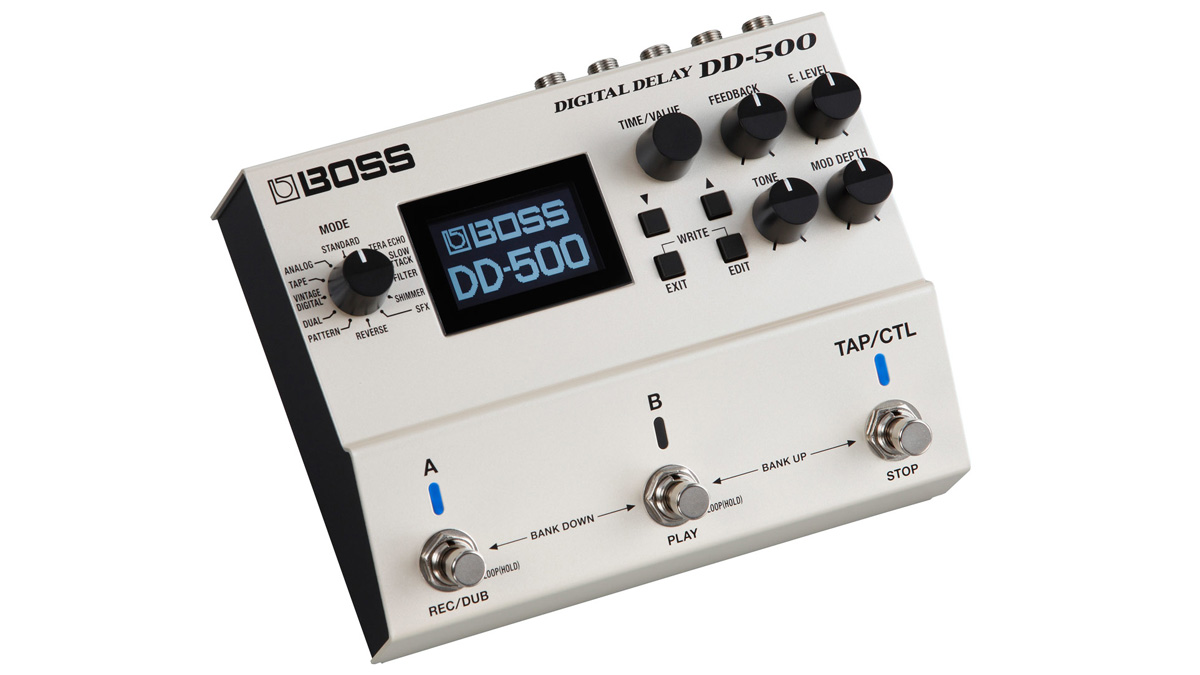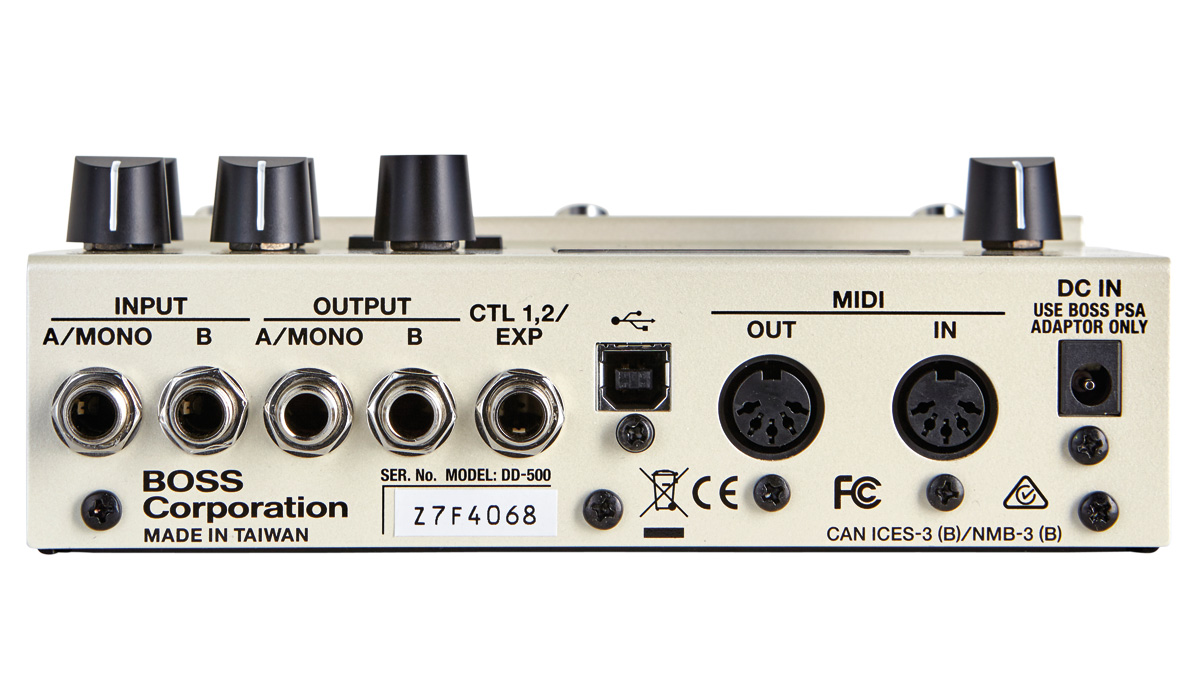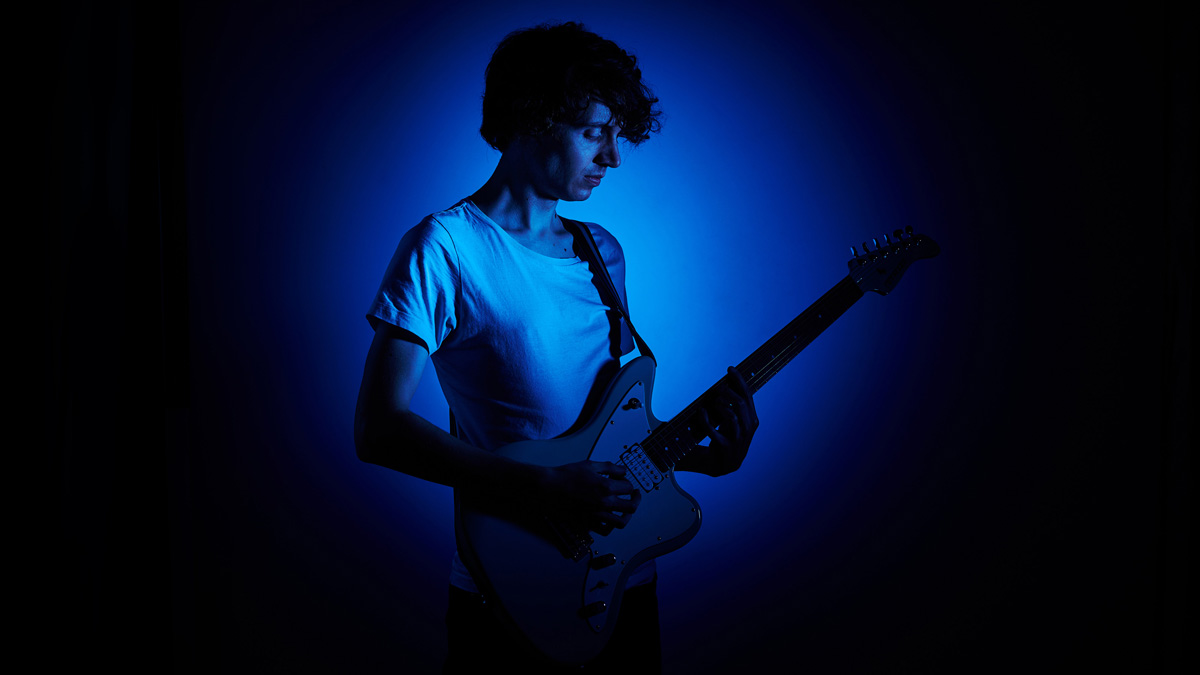MusicRadar Verdict
A worthy successor to the Boss digital delay throne.
Pros
- +
Great-sounding delays. Loads of options.
Cons
- -
Shimmer mode isn't the strongest.
MusicRadar's got your back

Boss DD-500 Digital Delay

Boss DD-500 Digital Delay
Back in 1983, Boss was the first company to cram the miracle of digital delay into a stompbox with the DD-2, making pristine repeats and longer delay times available to all.
Fast-forward to the early 2000s, and - kickstarted by Line 6's DL4 - delay pedals entered a new stage of evolution with presets and multiple models, and Boss's twin-footswitched DD-20 followed suit. Now, the company's latest flagship echo is in competition with the high-end Strymons and Eventides of the delay world. The solution? Push the DD format to its limits.
At first glance, the DD-500 mirrors its forebears, with physical knobs for key parameters: 12 delay types, time, feedback, level, tone and mod depth are all within reach, with your delay time displayed on the pedal's nifty LCD screen, which can also be used to dial in tempos and relative note lengths for ultra-precise delay times.
However, hit the edit key, and you're presented with an obscene level of parameters, from mod rate to EQ damping, ducking and stereo panning, not to mention mode-dependent settings… more on that later.
A whopping 297 patches are available to save your carefully crafted tones - you can access any two patches at once, assigned to the A and B footswitches, while tap/control offers tap tempo or a host of assignable functions: you can freeze current repeats, rapidly increase the delay rate for pitch-bending insanity or use it as a momentary footswitch so the delay only sounds when your foot is down, plus dozens more.
Alternatively, you can access three patches on the fly by changing the pedal to A/B/C operation - it's this flexibility that's among the DD-500's greatest strengths.
You can always rely on Boss to produce great-sounding delays, and the DD-500 doesn't disappoint. From crystalline digital reproductions to furry DM-2-style repeats and a choice of Space Echo and Echoplex tape echoes, you can't fault the integrity of the tones on offer.
The DD-500 can get weird with the best of them, too: Slow Attack applies fade-ins to each repeat, while Filter twists and turns them with a choice of three LFOs. SFX is our fave, though - nothing quite beats adding a bit crusher and tremolo to your delays for self-destructive mayhem.
Likewise Pattern's assortment of glitchy rhythms, and Tera Echo's delay-meets-reverb ambience. Shimmer is the only setting likely to divide opinion - although it offers a full range of intervals two octaves up or down, its tonality and tracking don't quite stack up to its stompbox rivals.
While delay junkies may argue that Strymon and Eventide have the edge in the tone department, Boss has them and most others beat in terms of sheer flexibility and value for money - we haven't even mentioned the easy-to-use looper, which boasts up to 120 seconds of loop time. It all ensures the DD-500 ranks among the best high-end delay units available today.
Mike is Editor-in-Chief of GuitarWorld.com, in addition to being an offset fiend and recovering pedal addict. He has a master's degree in journalism, and has spent the past decade writing and editing for guitar publications including MusicRadar, Total Guitar and Guitarist, as well as a decade-and-a-half performing in bands of variable genre (and quality). In his free time, you'll find him making progressive instrumental rock under the nom de plume Maebe.
"MC5 were playing on the radio": Pere Ubu founder David Thomas has died after “a long illness", aged 71
"An unholy amount of features in a standard-sized compact pedal": Mooer Prime Minimax M2 Intelligent Pedal review
“The most musical, unique and dynamic distortion effects I’ve ever used”: Linkin Park reveal the secret weapon behind their From Zero guitar tone – and it was designed by former Poison guitarist Blues Saraceno’s dad










